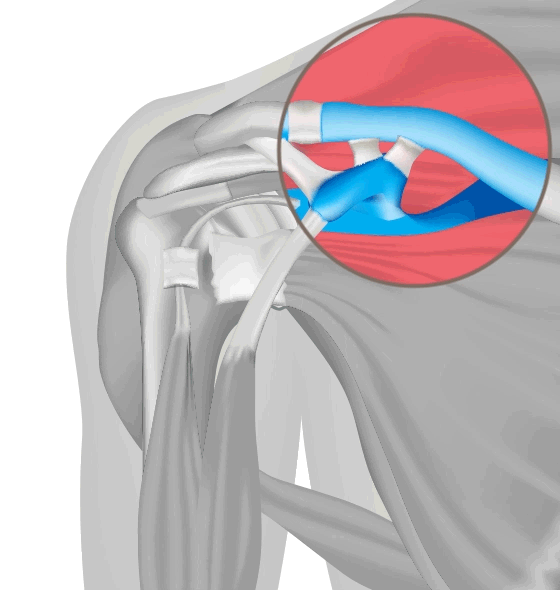A broken collarbone (clavicle fracture) usually occurs due to a fall on the shoulder The collarbone frequently breaks when people fall of their bicycle, from a motorbike or while they are skiing. Broken collarbones without malposition of the bones can be treated conservatively. Malpositions of the collarbone require surgery.
The collarbone (clavicle) connects the upper part of the breast bone with the shoulder. In the event of a fall on the shoulder girdle, the collarbone usually fractures in the middle third. A broken shoulder (clavicle fracture) usually occurs if the fall is sudden. For example, during a motorcycle accident, mountain biking or snowboarding.
The main symptom of a collarbone fracture is severe pain in the area of the collarbone. The movement of the shoulder is painfully limited. Sometimes malposition of the bone can be seen externally, and scraping of the bones is audible or discernible when the collarbone is palpated.
The diagnosis of a broken collarbone is made with an x-ray. Further examinations are rarely necessary.
The majority of broken collarbones can be treated conservatively. The broken collarbone is stabilised with what is known as a restraining sling, which must be worn for approx. four weeks. During the recovery phase, regular physiotherapy exercises are important to maintain movement and strength in the shoulder girdle.
A broken collarbone only requires surgery if there is malposition of the resulting fragments or the fracture involves soft tissue injury. The goal of the surgery is to fix the fracture with wires, plates or a tension band. The fixation of fractured bones with metal parts is known as osteosynthesis. Find out more about this in the osteosynthesis section.


